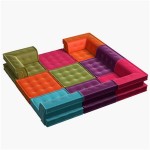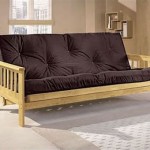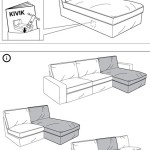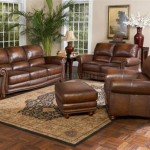Sofa Material Types
Choosing the right sofa involves a multitude of decisions, and one of the most crucial is selecting the appropriate upholstery material. The material not only determines the sofa's aesthetic appeal but also its durability, comfort, and maintenance requirements. Understanding the characteristics of various sofa materials empowers consumers to make informed decisions aligned with their lifestyle and preferences.
Fabric Upholstery: Fabric offers a broad spectrum of options, each with unique properties. One popular choice is linen, a natural fiber known for its breathability and relaxed, casual appearance. Linen is relatively durable but can wrinkle easily and may not be the best choice for high-traffic areas or homes with pets. Cotton, another natural fiber, provides a soft, comfortable feel and is generally affordable. However, it can be prone to staining and fading, requiring extra care. Microfiber, a synthetic material, offers excellent stain resistance and durability, making it a practical choice for families. Its soft texture resembles suede, providing a luxurious feel at a lower price point.
Leather Upholstery: Leather exudes a timeless elegance and offers exceptional durability. Full-grain leather, the highest quality option, retains the natural markings of the hide, giving it a unique character and developing a rich patina over time. Top-grain leather, while slightly less durable than full-grain, is treated for a more uniform appearance and is still highly resistant to wear and tear. Genuine leather, a more affordable option, uses layers from the bottom of the hide, making it less durable. Leather requires specific cleaning and conditioning to maintain its appearance and prevent cracking.
Synthetic Leather Upholstery: Synthetic leather, also known as faux leather or pleather, offers a cost-effective alternative to genuine leather. It mimics the look and feel of leather but is typically less durable. Synthetic leather is generally easy to clean and maintain, making it suitable for households with children or pets. However, it is less breathable than genuine leather and may not wear as well over time.
Velvet Upholstery: Velvet adds a touch of opulence and luxury to any living space. Its soft, plush texture creates a warm and inviting atmosphere. Velvet can be made from various fibers, including cotton, silk, and synthetic materials. While beautiful, velvet can be more challenging to maintain, requiring professional cleaning for certain stains and being susceptible to crushing or matting. Regular brushing helps maintain its appearance.
Polyester Upholstery: Polyester is a synthetic fiber known for its durability and resistance to wrinkles, fading, and shrinking. It’s often blended with other fibers to enhance its softness and texture. Polyester is a practical and budget-friendly option, offering good performance in high-traffic areas. It’s easy to clean and maintain, making it a popular choice for families.
Acrylic Upholstery: Acrylic is another synthetic fiber often used as a wool alternative. It offers good resistance to sunlight, fading, and mildew. Acrylic is also relatively soft and easy to clean, making it a suitable choice for outdoor furniture or indoor spaces exposed to sunlight. It’s less durable than some other synthetic materials like polyester, but it offers a more affordable option compared to natural fibers.
Olefin Upholstery: Olefin, also known as polypropylene, is a strong and durable synthetic fiber resistant to stains, abrasion, and sunlight. It’s often used for outdoor furniture due to its excellent weather resistance. Olefin is also a good choice for high-traffic areas indoors. While durable, it can be less soft and comfortable compared to other materials.
Choosing the Right Sofa Material: The ideal sofa material depends on individual needs and lifestyle. Factors to consider include durability, comfort, maintenance requirements, and budget. Families with children or pets may prioritize durability and stain resistance, while those seeking a luxurious look might prefer leather or velvet. Careful consideration of these factors ensures a sofa that not only complements the home's aesthetic but also meets the practical demands of daily life.
Maintenance Considerations: Regular maintenance is crucial for preserving the appearance and extending the lifespan of any sofa material. Vacuuming regularly helps remove dust and dirt that can contribute to wear and tear. Spot cleaning stains promptly prevents them from setting. Professional cleaning is recommended periodically, particularly for delicate materials like velvet or silk. Following manufacturer's care instructions specific to the chosen material ensures optimal maintenance and longevity.
Budgetary Considerations: Sofa materials vary significantly in price. Synthetic materials like microfiber and polyester tend to be more budget-friendly than natural materials like leather or linen. Setting a budget before shopping helps narrow down the options and ensures a purchase that aligns with financial limitations. Considering the long-term investment and durability of different materials allows for informed decision-making about the overall value and cost-effectiveness of the purchase.

17 Types Of Sofa Materials In Malaysia Best Fabrics For Your Couch Cuura Space

What Are The Top 10 Fabrics For Sofas Picket Rail Custom Furniture Interiors

10 Best Sofa Material Types That Are Perfect For Every N Home

Best Sofa Materials Leather Vs Fabric Sofas

What Is The Best Fabric For A Sofa Living Designs Furniture

Sofa Upholstery What Should You Know Before

Sofa Fabric Types Crate Barrel

Diffe Types Of Upholstery Fabrics Leelathe Home Decor

15 Types Of Sofa Materials Sofasmalaysia Com

Diffe Couch Fabric Types








